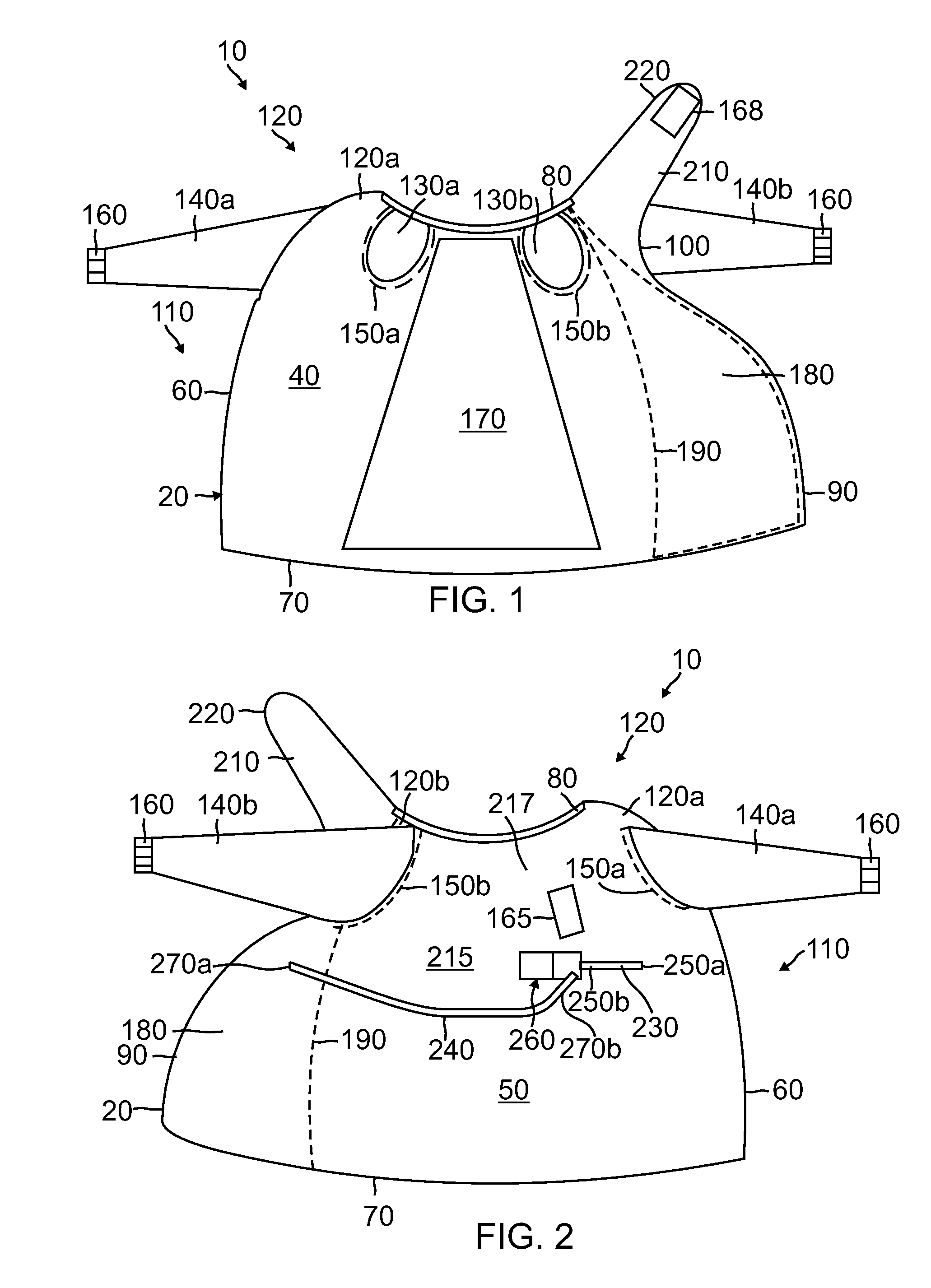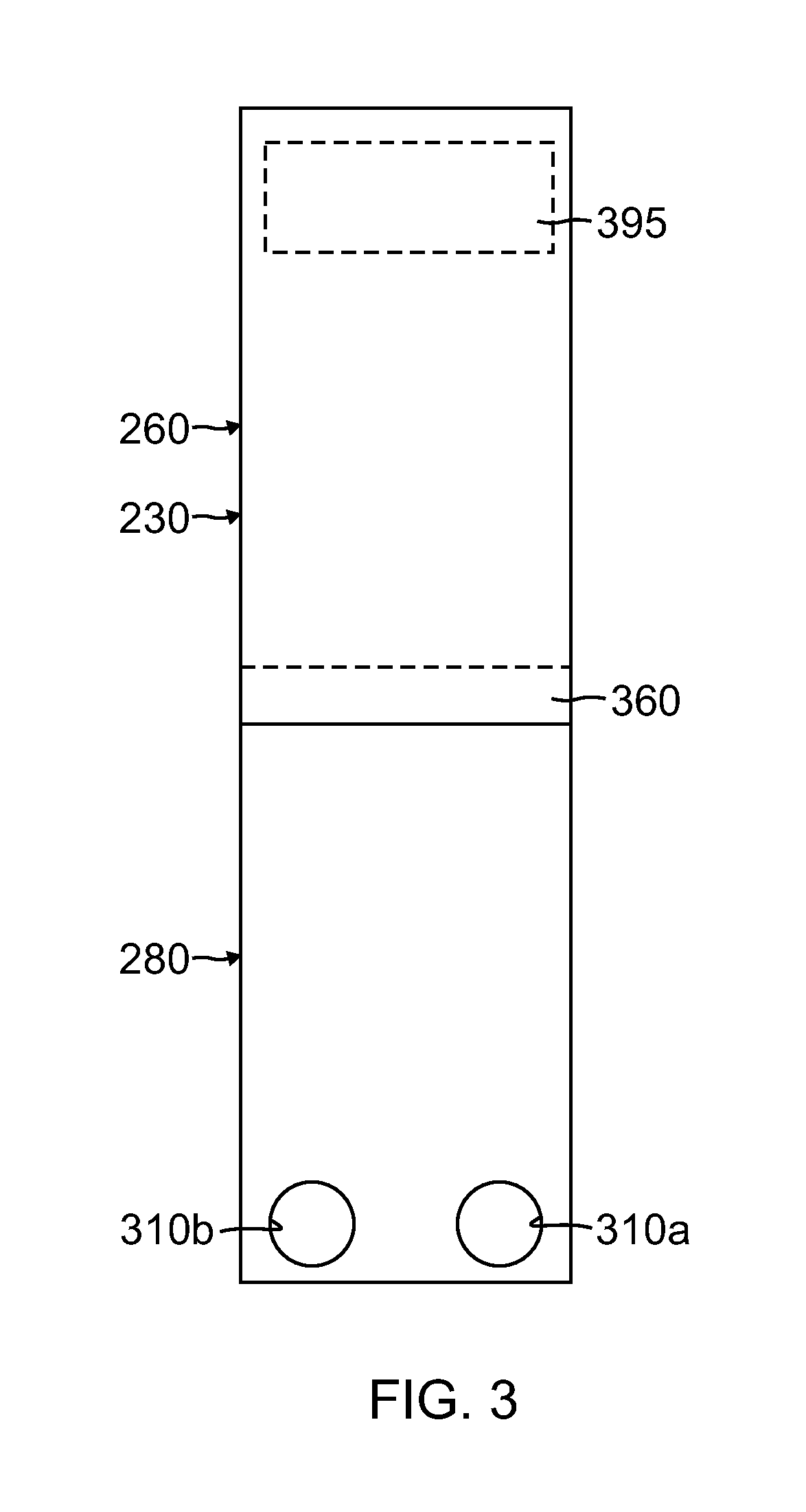Surgical gown and method of manufacturing the surgical gown
a surgical gown and surgical technology, applied in nuclear engineering, chemical protection, nuclear elements, etc., can solve the problems of reducing affecting the so as to increase the productivity and efficiency of surgical gowns and reduce operating costs
- Summary
- Abstract
- Description
- Claims
- Application Information
AI Technical Summary
Benefits of technology
Problems solved by technology
Method used
Image
Examples
Embodiment Construction
[0072]Referring now to the drawings and more particularly to FIGS. 1 and 2, there is shown a first embodiment surgical gown, generally referred to as 10, which is constructed in accordance with the present invention. Surgical gown 10, as will be described hereinafter in greater detail, provides an effective barrier to protect a surgery patient and operating room personnel from transfer of microorganisms, body fluids and particulates that might otherwise cause infections. For example, such infectious microorganisms might include Methicillin-Resistant Staphylococcus Aureus (MRSA), clostridia, streptococci, staphylococci, E. coli bacilli and other pathogens, bacterium and microbial organisms. Body fluid, such as blood, might contain blood-borne pathogens, such as Human Immunodeficiency Virus (HIV), Hepatitis B and Hepatitis C viruses. Particulates may be dried residue from disinfectants or chemicals.
[0073]Considering now surgical gown 10 in greater detail and with reference to the seve...
PUM
 Login to View More
Login to View More Abstract
Description
Claims
Application Information
 Login to View More
Login to View More - R&D
- Intellectual Property
- Life Sciences
- Materials
- Tech Scout
- Unparalleled Data Quality
- Higher Quality Content
- 60% Fewer Hallucinations
Browse by: Latest US Patents, China's latest patents, Technical Efficacy Thesaurus, Application Domain, Technology Topic, Popular Technical Reports.
© 2025 PatSnap. All rights reserved.Legal|Privacy policy|Modern Slavery Act Transparency Statement|Sitemap|About US| Contact US: help@patsnap.com



